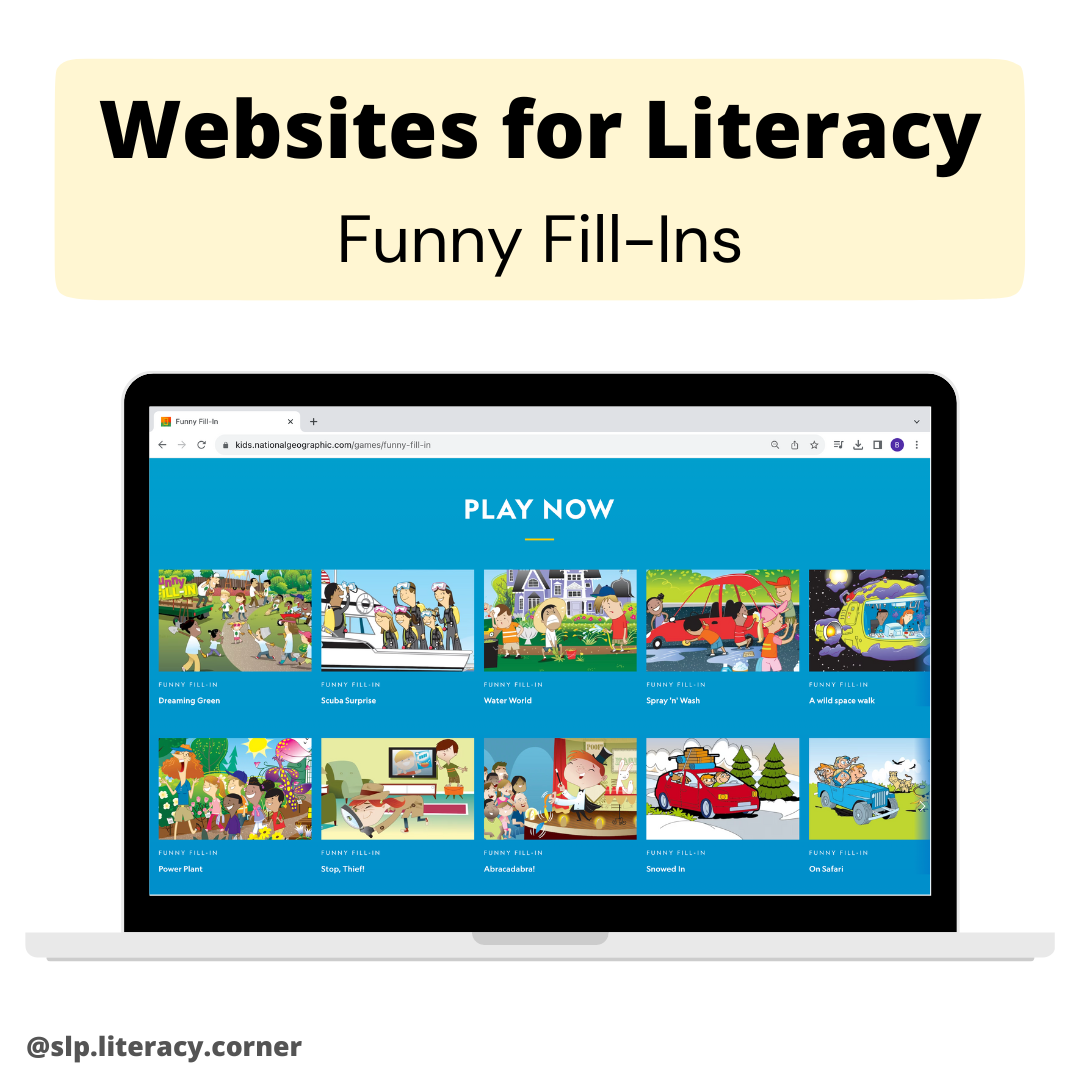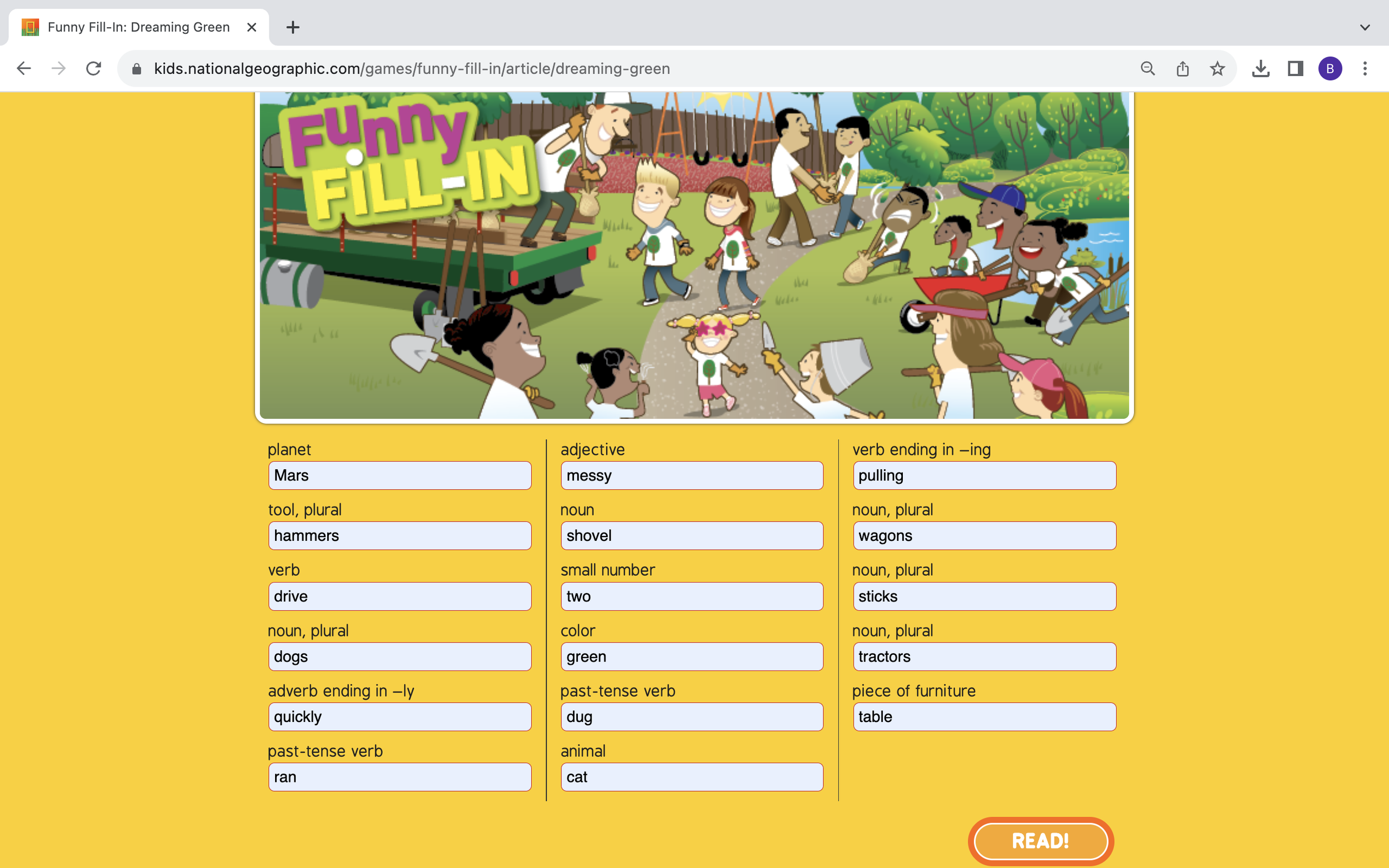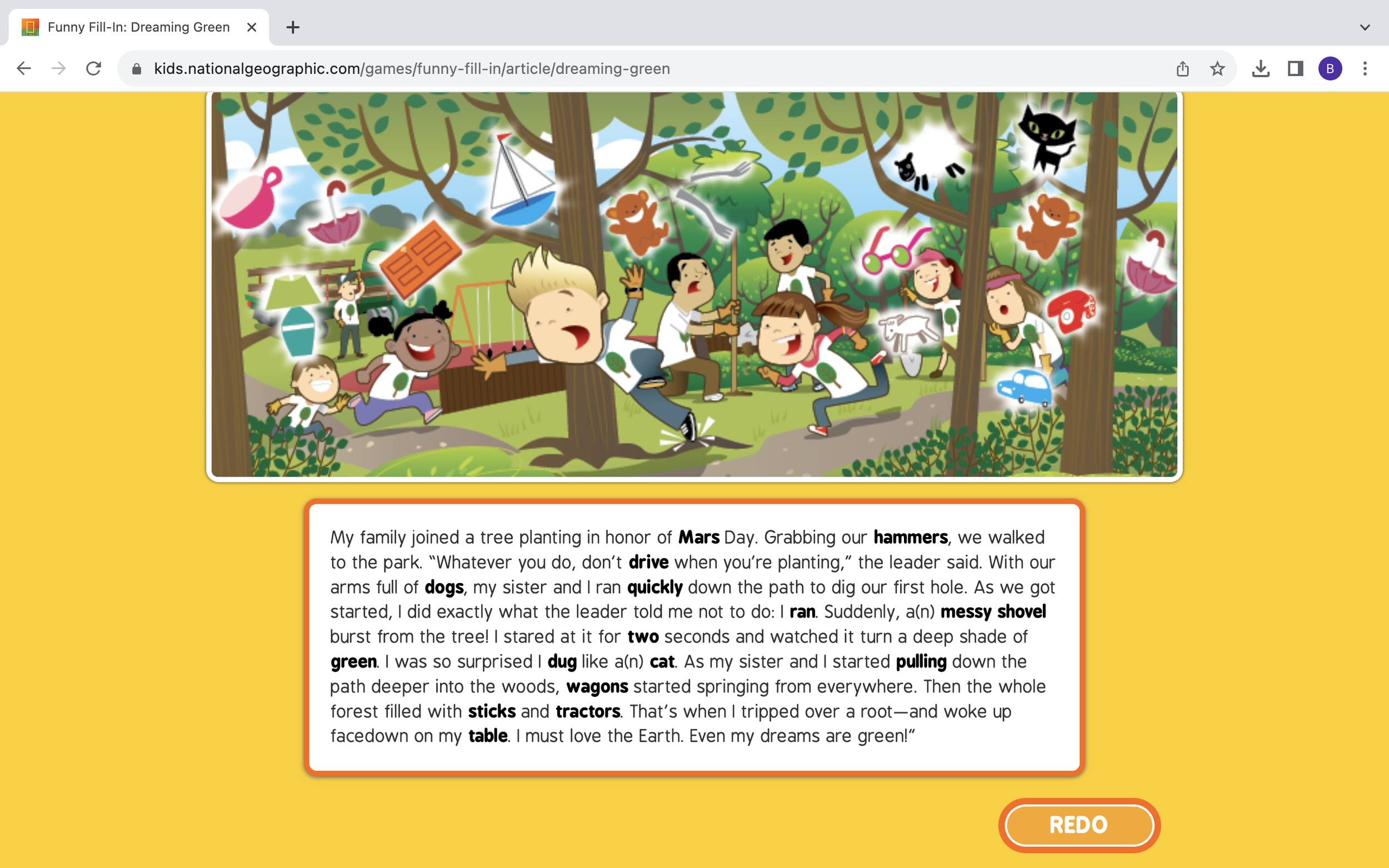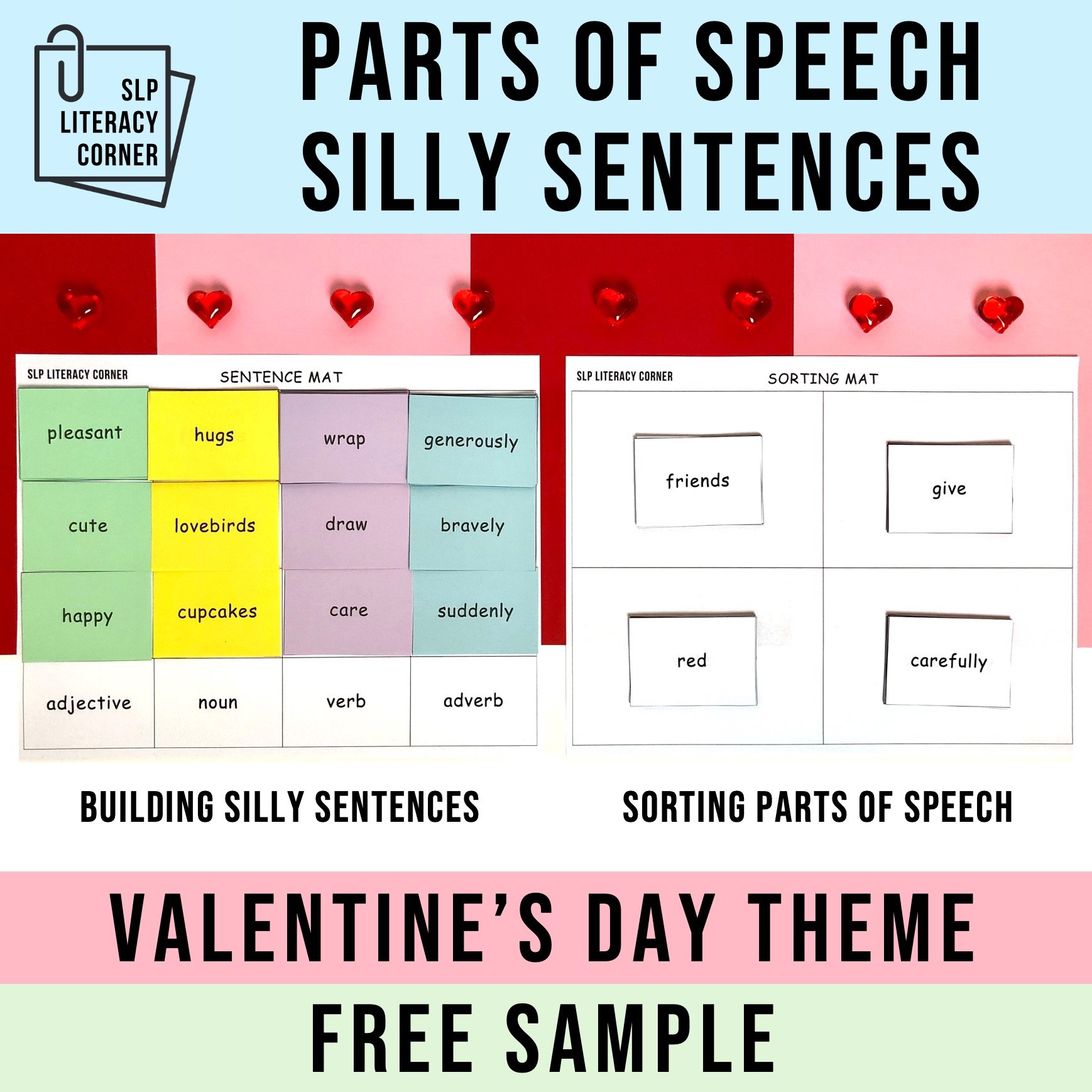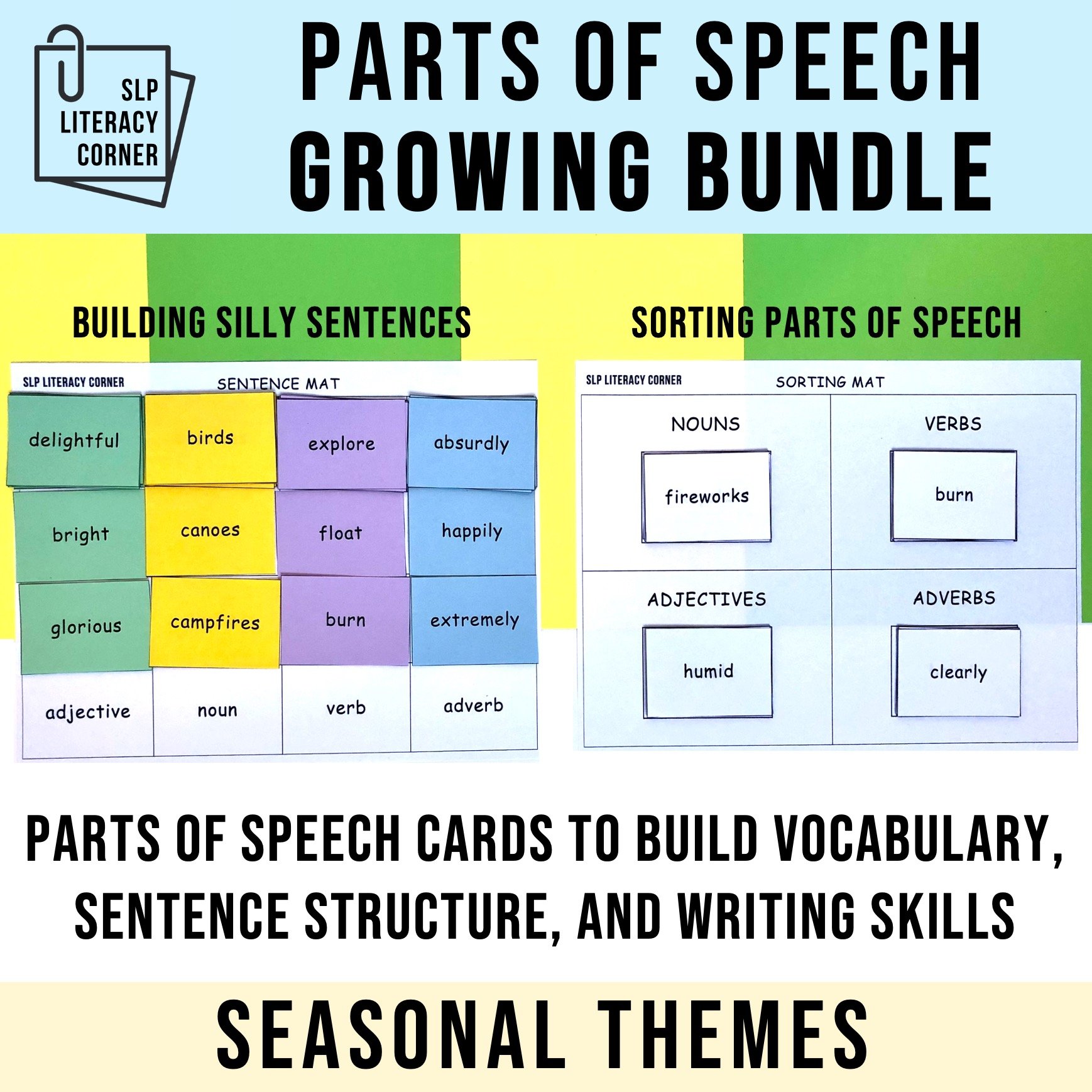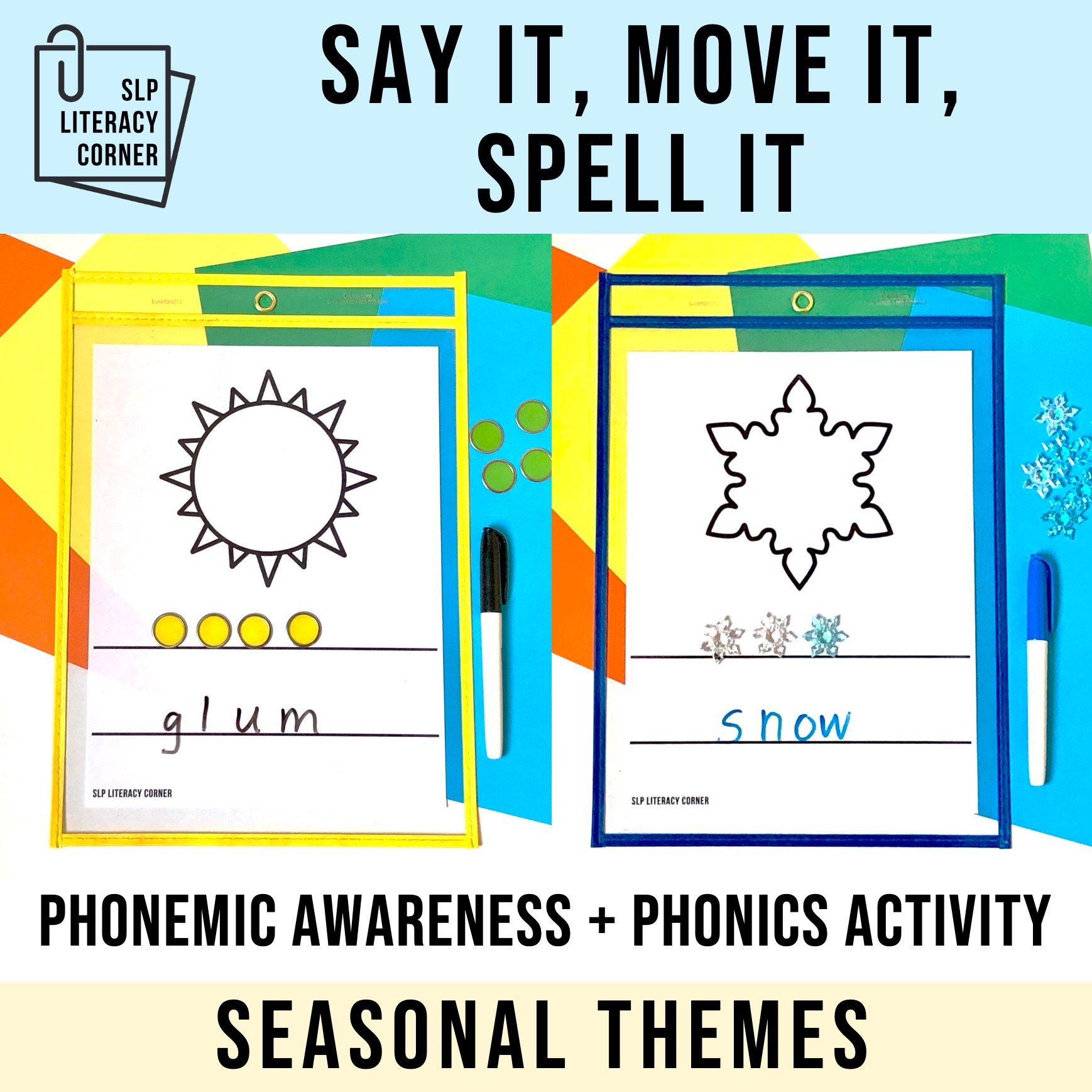Websites for Literacy - Funny Fill-In
Written by: Brianna Guild, MHSc SLP(C)
Date: September 1, 2023
There are many things I love about the National Geographic Kids website, but my most used section of the website is the Funny Fill-In activity! These “Mad Libs” like word games are an engaging activity for students of all ages, and you can target a wide variety of literacy goals within a single activity.
1. Phonological Awareness
- Syllable Awareness: Identify multisyllabic words in the completed paragraph and practice counting, isolating, segmenting, blending, and manipulating syllables in the words. Remember: a syllable is a unit of a word that has 1 vowel sound (e.g., drive = 1 syllable, hammers = 2 syllables, suddenly = 3 syllables).
- Segmenting Skills: When generating words to fill in the blanks, first orally segment the word into sounds, then map each sound to its spelling in order to spell the word (adult should model and support with spelling as needed).
- Blending Skills: When reading target words (e.g., words that were used to fill in the blanks), practice using continuous blending (connected phonation) to sound out (read) the word.
2. Phonics
- Spelling rules: Fill in the blanks with word containing the sounds or spellings a student is learning and/or reviewing (e.g., for the “long e” sound - messy, green, leader). This gets students thinking about and generating words aligned with the sounds or spellings they are learning. It also give them an opportunity to spell the words when filling in the blanks, and read them at the word and paragraph levels!
BONUS: Have students look for more of their current and learned spelling targets in the completed paragraph.
3. Vocabulary
- Parts of speech: Funny Fill-Ins are an excellent activity to practice identifying and generating nouns, verbs, adjectives, and adverbs. Make sure you review the meanings of these concepts (e.g., a noun is a person, place or thing, a verb is an action word, an adjective is a describing word) before starting the activity.
- New vocabulary activities: Further discuss new vocabulary words from the Funny Fill-In through additional activities such as creating definition entry pages or your own fill-in-the-blank sentences with new words.
4. Reading Fluency
- Timed reading: If you fill in the blanks with your phonics words, work on reading rate/automaticity by timing how long it takes the student to read the target words at the word and paragraph levels. Have them read it again and challenge them to beat their time (while maintaining their accuracy)!
- Reading with feeling: Practice reading the completed paragraph with different feelings (e.g., happy, sad, angry, scared) and discuss how that changes the meaning of the story.
5. Reading Comprehension
- Make predictions: Before reading the paragraph, ask the student to predict what the completed paragraph will be about based on the title and cover picture for the Funny Fill-In activity. After reading, have them check their prediction to see if it was correct.
- Answer comprehension questions: After reading the paragraph, ask the student questions (e.g., What was the main idea? What is the setting, and how do you know?), and discuss why the paragraph is silly (e.g., Why doesn’t this word make sense here? What word would be a better fit?).
6. Writing
- Picture prompts: Extend the activity by using the picture on the completed paragraph page to inspire students to write their own narrative, and work on narrative structure (e.g., characters, setting, problem, feeling, actions, ending, ending feeling).
Join the SLP Literacy Corner email newsletter to get access to exclusive free resources, such as handouts with activity ideas for your literacy lessons. Sign up here!


